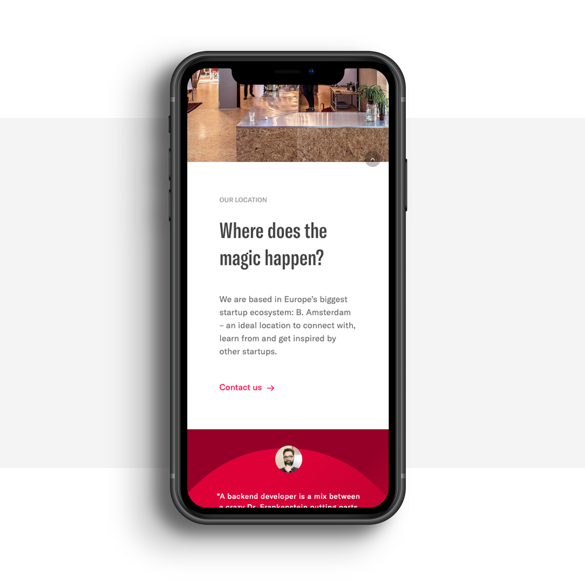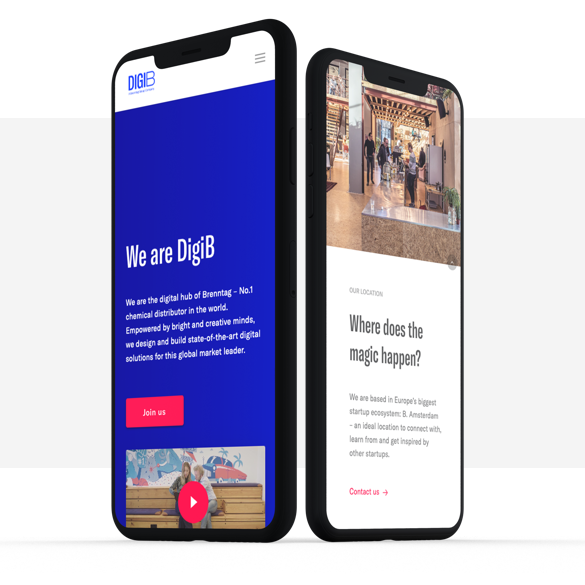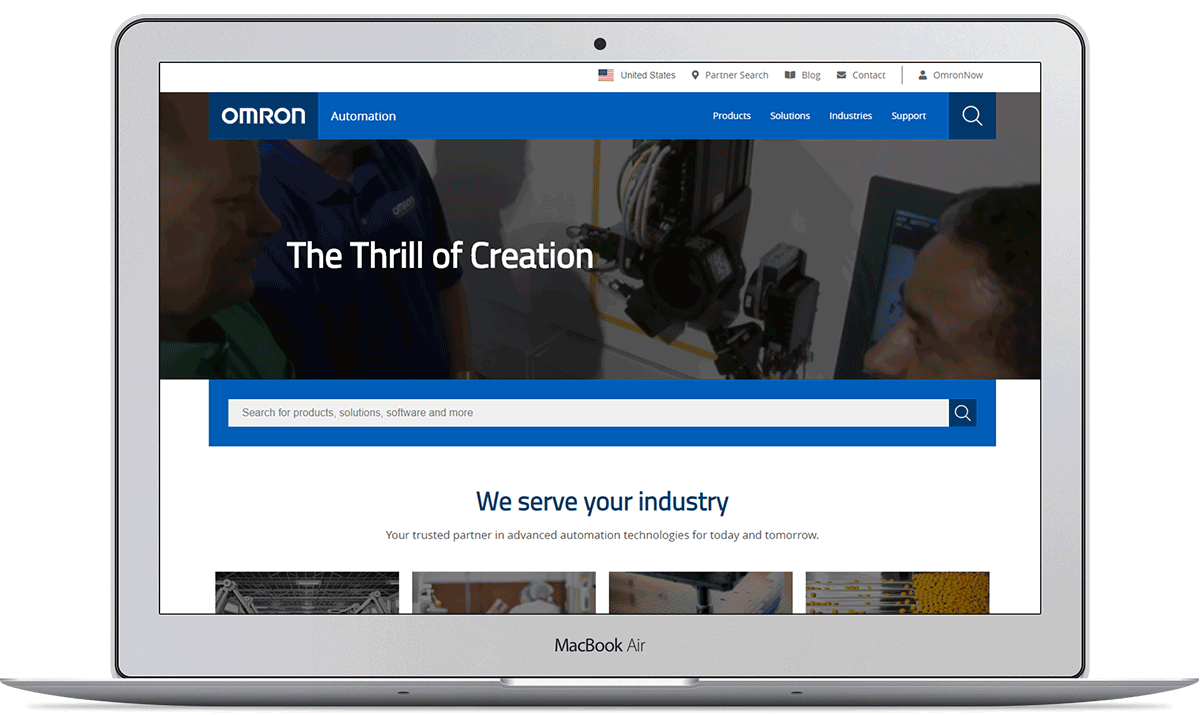The process of building an ecommerce platform can seem like new ground to many B2B CEOs. Understanding the array of software options on the market, learning new phrases like ‘headless commerce’, being able to distinguish between a CMS and a DXP. These surface level barriers can scare some away, but by digging a little deeper, every company head will find themselves in familiar territory.
A successful B2B commerce platform is built on an in-depth understanding of the customer. Awareness of customer needs. Knowing what causes friction in the purchasing process and how to work around it. The leadership team are experts in their industry and know what makes their customer base tick. By stripping away the excessive acronyms and complicated definitions, B2B commerce comes down to knowing what customers need.
At its very core, digital transformation is about making your company’s assets go further. Can the innovative thinking of the leadership team be implemented quicker? Can insights gathered from customer data be applied to other areas of the business? Can consumers be given an easier path to purchase? Digital transformation magnifies strengths by focusing on scalable improvements.
Brenntag: building a digital chemical business
For Brenntag, a German chemical distributor operating in 76 countries, implementing a digital transformation began with an appreciation of their industry. Brenntag’s world, the chemical sector, is heavily physical. However, digital transformation touches on each aspect of the business. At every turn, innovative digital approaches could be used to optimise and improve the efficiency of internal processes, and ease the experience of customers.
The process of digital transformation was split along internal and external improvements that could be made. Working with DEPT®, the company put together a system of Internal Tooling that set out to improve the efficiency of their everyday, internal processes. This includes features like Brenntag Source, an application for reviewing supply chain data.
Use existing supply chain data to help your clients
The Brenntag Source feature can be used to filter data on different suppliers, giving Brenntag the information they need to engage in informed face-to-face negotiations with suppliers.
For the customer, this information can be turned into tracking software, keeping the buyer updated about the delivery of their purchase, and also informed about the sourcing, materials and manufacturing of their order. Good customer experience is what drives repeat purchasing, particularly in the manufacturing sector where trust is a key business driver. This added value can be what sets the company apart from its competition, as it puts the customer at the centre of the process, answering every question they may have.
On the external side, Brenntag Connect was created, an ecommerce portal that provides customers with information on the chemicals and orders that Brenntag provides, as well as a platform to track their security data, invoices and orders.
Make repeat purchasing a top priority
When planning a B2B commerce platform, it is important to think of the sector specific rules that affect how it can be used. Due to the regulated nature of the chemical industry, Brenntag Connect is only available for customers that have gone through an intensive onboarding process. This means that users of the platform are likely to be committed, long term customers, therefore making repeat purchasing easy was a top priority. To this end, Brenntag implemented an automated repeat business function.
One of the key challenges for any commerce platform project is to establish a long term strategy. To start putting a system like this in place, put together a list of needs that the platform must fulfil. From this information, build a digital roadmap that outlines the steps your business will take over the next three years, each time responding to a customer need.
Digital transformation is a step-by-step journey, not an overnight makeover. By beginning with priority areas based on customer needs, your company can start serving customers better and begin the process of learning and adapting your e-commerce approach.
Like any map, the route is liable to change based on real time information. Data capture is a core need for any project, informing and ensuring that the decisions and actions taken are correct. What we measure, we can affect. In terms of a digital roadmap, see the data as you would see live traffic updates. Be ready to get past roadblocks by adapting the route.
To keep their digital transformation on track and ensure, Brenntag built DigiB, a digital innovation hub that operates autonomously from Brenntag. The organisation aims to rapidly accelerate their technological innovation across the business, running small scale projects that have the potential to scale, and aiding the implementation as Brenntag finds new, more efficient ways of operating.


The guiding motto of DigiB is “create it, launch it, learn from it.” Rather than taking the time to perfect every single release, adding months to the lead time, DigiB focuses on putting new projects into the marketplace. Release a smaller scale project. If it works, scale it up, if it doesn’t, take a step back and learn from the problems that users experienced. This way, every project is a worthwhile endeavor, creating a ‘succeed or learn’ mentality that fosters a strong corporate mentality.
Being able to create a company-wide culture that believes in the digital transformation project matters, as each department is able to offer input on how the key business goals can be achieved. Sales teams will be speaking to current and potential customers day in, day out. Operational teams will be using the internal tools each day, able to give feedback on what works and what is still missing.
Each business will have a different priority when it comes to building a B2B ecommerce platform. This depends on the customer needs in each sector, and any pressures that are placed on the business by industry regulations. The list below looks at some of the most common priorities, though each business is different.
Making product discovery clear and simple
Companies with a wide array of available products or services will benefit from making sure that the site is built to provide easy-to-understand information on each product. On each product page, aim to answer any question the customer could have; keeping the customer on the product page means more proximity to the checkout.
Easy product discovery also means clear categorisation of products. Many B2B suppliers and distributors provide highly specialised products; it is the company’s responsibility to make finding the appropriate specialised product simple. The less friction in the buyer’s journey, the more likely they are to purchase.
Enabling site search
An undervalued benefit of building an e-commerce platform, site search is an obvious boost to user experience, but also an important data gathering tool. For many visitors, site search is how they engage with the site. It’s the bridge between each page, expediting the process of finding a product to buy. In terms of user experience, various features can be implemented to aid their search, such as autofill, search correction suggestions, and the ability to filter results. For visitors that are used to the features offered by Google, these additions to site search are less an added bonus and more of an expectation.
With site search implemented, make sure to review the analytics software to follow the journeys that users take around the site. Each business spends a good chunk of time trying to understand buyer journeys; this feature gives users the ability to track each journey to purchase.
By putting an advanced search tool in place, your business is able to see the key information that customers gravitate towards. It also Indicates missing content that the business should create – the questions customers are asking but not finding the answer to. The business can also see which additional purchases are considered, but not added to the basket, showing potential sales activations to use. Working with Omron, DEPT® used site search analytics and the onsite tracking software Hotjar to see how the architecture of the site was impeding users from checking out.
Putting all this together, the information can be used to provide a much more personalised experience for each visitor. Personalising the shopping experience boosts e-commerce sales, in DEPT®’s ‘What Do Consumers Really Think Of Personalisation?’ study, we found that 38% of consumers would spend more if a brand uses personalisation relevant to their needs. For Omron, this resulted in a tailored experience based on whether the visitor self-identified as a distributor, a system integrator, an employee, an end user, or a member of the press. Giving the appropriate information led to a 20% fall in bounce rate and a doubling of the average number of pages visited per session.

Logistics, lead time and availability
For a B2B commerce platform, providing detailed information on the manufacturing, shipping and delivery time is a key addition. Availability too, as nothing is more frustrating than finding the right product only to see it’s unavailable. This information is vital to future planning. It helps the customer plan their purchases and ensures they fit the time scale of their project. In an increasingly eco-conscious economy, being able to review shipping options and sourcing of products also allows the company to make the right decision based on environmental impact.
As a B2B supplier, think of the common questions that customers would ask, and that your business would ask of a supplier. Aim not only to answer these queries, but to make the answers highly visible and in close proximity to the purchase.
Product comparison
For suppliers that offer a wide range of similar products, particularly those that specialise in a particular niche, giving site visitors the ability to compare products is an important benefit. Not only can they compare in detail each product, they are also more likely to make the right purchase, boosting their opinion of the brand and making the customer more likely to return.
Crawl, walk, run
Whether your business is highly fluent in digital projects or new to the space, the journey to running a market-leading e-commerce platform begins with the first step. Rather than aiming to release the perfect platform, begin with agile projects. Focus on making an impact sooner rather than later and seeing what can be proved and what can be learned. Steady rollout of further features will create a system of constant improvement, always aiming to iterate and optimise. Each success will be reflected by customer sales and preference for your business.
More Insights?
View all InsightsQuestions?
Global SVP Technology & Engineering





